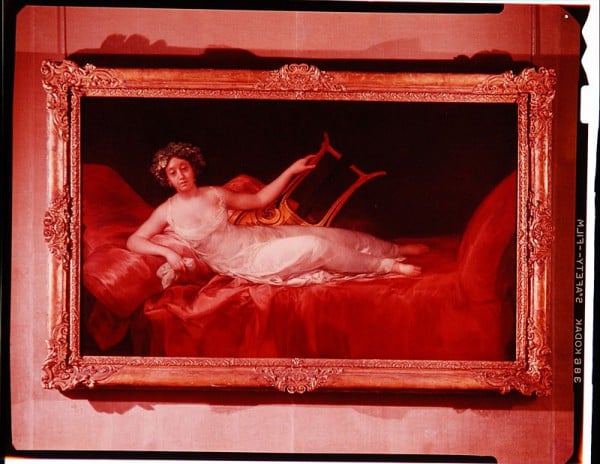Law & Politics
Missing Goya Found Amid Seized Art Trove of Shoe Queen Imelda Marcos


Cait Munro

Imelda Marcos, former first lady of the Philippines and the owner of a famously massive shoe collection, turns out to have also briefly been in possession of an early 19th-century Goya canvas. The artwork somehow vanished from the Los Angeles County Museum of Art (LACMA), apparently never to be seen again, until much of the shoe queen’s property was seized by the Philippine government in 2014.
When the museum initially acquired The Marquesa of Santa Cruz as a Muse from the Duke of Wellington dynasty in 1965, it was buzzy enough to earn a feature in Time magazine. But the painting vanished from the museum’s guidebook in 1977, as well as all subsequent guidebooks both in print an online. No news articles were published on the subject, nor is anything regarding the painting to be found in board meeting minutes from the period.
What happened? On the occasion of the museum’s 50th birthday (see Billionaire Jerrold Perenchio Gifts $500 Million to LACMA and LACMA Receives $50 Million Gift of Hirst, Schnabel, and Warhol), art critic and blogger William Poundstone decided to find out.

Francisco de Goya, The Marquesa of Santa Cruz as a Muse, early 19th century.
Image: via William Poundstone/Blouin artinfo
Poundstone’s research concludes that the museum deaccessioned the painting in 1978, selling it to dealers at Marlborough London, who apparently sold it to Marcos. Exactly why LACMA chose to part with the piece is unknown. However, it appears critical opinion may have turned on the painting in the years following the glowing Time feature. Some Goya specialists also speculated that it was not authentic. Even the Duke of Wellington, who sold the picture to the museum, noted that it was not a personal favorite.
It was seized last year on the grounds that it and several others were allegedly purchased with government funds. Its current whereabouts are unknown, though Carolina Miranda of the Los Angeles Times wagers a few good guesses—”Police warehouse? Home of a well-connected government bureaucrat? Any place but a museum?”
Luckily for those who wish to view it, the Prado Museum in Spain boasts a better version of the piece, which once belonged to British aristocrat Lord Wimborne.